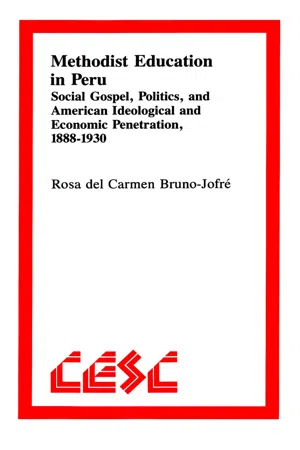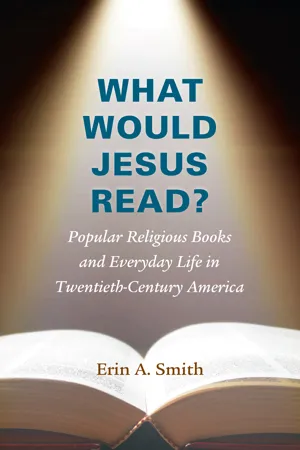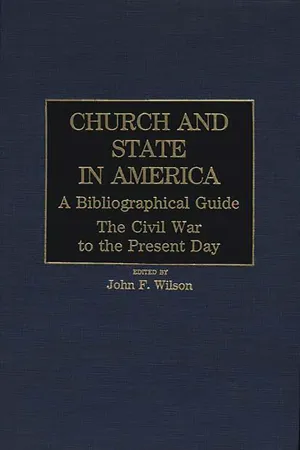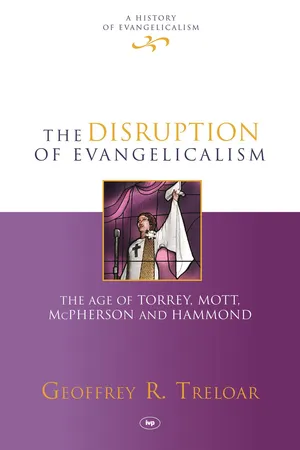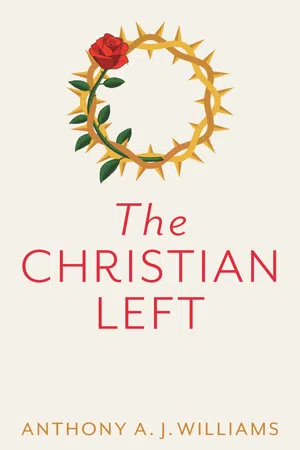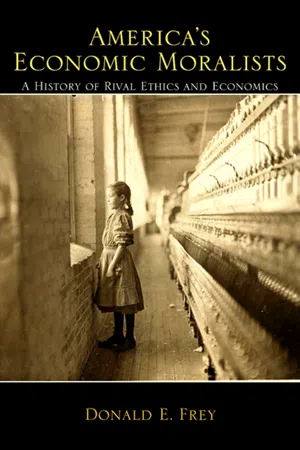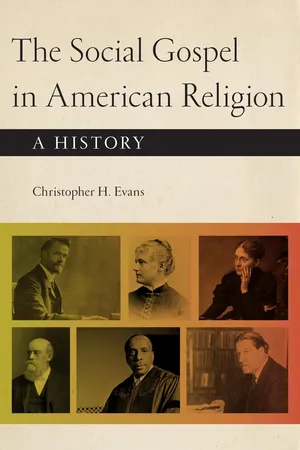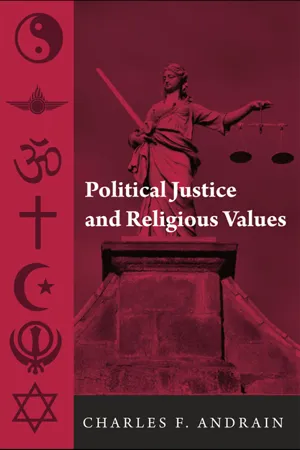History
Social Gospel Movement
The Social Gospel Movement was a 19th-century Protestant movement in the United States that sought to apply Christian principles to social problems such as poverty, inequality, and injustice. It emphasized the importance of addressing societal issues and promoting social reform, and it had a significant impact on the development of progressive social policies and activism in the country.
Written by Perlego with AI-assistance
Related key terms
1 of 5
11 Key excerpts on "Social Gospel Movement"
- eBook - PDF
Liberalism without Illusions
Renewing an American Christian Tradition
- Christopher H. Evans(Author)
- 2011(Publication Date)
- Baylor University Press(Publisher)
Although many social gospelers did provide social-political remedies for these social problems, a larger number of the key representatives of the movement were more concerned about raising public awareness about the plight of the nation’s poor, and seeking to stir churches to act, in concert with business and government leaders, to address these social ills. The Rise of the American Social Gospel Gary Dorrien notes that the belief that Christianity has a mission “to transform the structures of society is distinctively modern.” 12 For all the different emphases that characterized the major representatives of the social gospel, they all shared in some fashion a belief that Christian-ity’s mission was not just to change a person’s heart, but to change the structural makeup of society. As the social gospeler Washington Gladden noted, “the end of Christianity is twofold, a perfect man in a perfect soci-ety. . . . These purposes are never separated; they cannot be separated.” 13 As a historical movement, the social gospel can be roughly divided into two phases. Its early phase coincided with the final two decades of the nineteenth century, and the second wave occurred in the years 60 Liberalism without Illusions preceding World War I, when the movement gained a prominent insti-tutional stronghold in several large northern Protestant denominations. 14 The first wave of social gospelers were men and women who promoted the movement’s cause as writers, journalists, scholars, public speakers, and ministers. One part of the tradition was manifested by ministers like Lyman Abbot, who served as the longtime editor of the popular maga-zine The Outlook (in addition to being Henry Ward Beecher’s successor to the pulpit at Plymouth Congregational Church). - eBook - ePub
The Presbyterian Pendulum
Seeing Providence in the Wild Diversity of the Church
- Englund-Krieger(Author)
- 2010(Publication Date)
- Wipf and Stock(Publisher)
1The Social Gospel Movement
A s the twentieth century dawned, the Social Gospel Movement1 pushed the pendulum in the Protestant churches. This movement lengthened the swing between different theological perspectives. The length of the pendulum’s swing, that is to say the distance between the theological poles in the Protestant mainline, has never diminished in the century since the advent of Social Gospel Movement. The American tradition of evangelical Christianity, which focused on the salvation of individual souls for Jesus was now counterbalanced with a bright, social Christianity. Within the Presbyterian Church we will see these opposite viewpoints in the ministry of Charles Stelzle and Charles Erdman. The social gospel was influential primarily in the old mainline denominations, whose dominance was in those places where the Industrial Revolution was changing everything. The proclamation of the social gospel was loudest in the Methodist, Presbyterian, and Congregational denominations. Individual salvation was not the focus of this revolutionary movement. The social gospel advocates preached about Christianizing society, addressing social concerns, redeeming economic practices, and ushering in the kingdom of God.Most important for our concern is that this movement brought a wider, broader, more comprehensive message into the churches. Now, clearly, the churches included a richer diversity. Opposite ends of the theological pendulum seemed contradictory. As the twentieth century dawned, the need for Christians to perceive the deeper message to which the wild swinging pendulum pointed was essential. The church struggled to hold itself together against centrifugal forces wanting to pull it apart. Possibly this is a struggle that could describe any era in Christian history. But we will see that this struggle for unity, the desire to see the providence in all the diversity is a special concern of twentieth-century American Protestantism. Prayerfully, the better vision provided by our hindsight and historical reflection will make the fight for unity a bit easier for us at the dawn of the twenty-first century. - eBook - PDF
Methodist Education in Peru
Social Gospel, Politics, and American Ideological andEconomic Penetration, 1888–1930
- Rosa del Carmen Bruno-Jofré(Author)
- 2006(Publication Date)
- Wilfrid Laurier University Press(Publisher)
However, an articulate group moved beyond defensive modifications to constitute a new school of theology that was later known, particularly from the 1910s onwards, as the Social Gospel School, and exerted a great influence on American thought. In tracing the origin of the Social Gospel, Charles H. Hopkins paid particular attention to what he calls the progressive orthodoxy that paved the way to an ethical Christianity by replacing the dualism sustained by the old orthodoxy of this world versus the other world. 5 May describes Social Gospel as only moderately progressive, refraining from following radical paths that could separate its representatives from the mass of their Protestant contemporaries. 6 Radical Christian groups, on the other hand, rejected the basic existing social and economic organization, promoting solutions that were mostly very shocking for their contemporaries, but courageous in any case. Good examples are Theodore Borvine, who in 1884 recommended following the Christian communism of the apostles, and Hugh D. Pentecost, the Christian anarchist who, standing alone among Christian ministers, denounced the hanging of the Chicago anarchists as murder. 7 The Social Gospel doctrines (progressive social Christianity) will be examined here because they reached the missionary field and were closely related to the educational theories that Methodists enunciated and tried to develop. Social Gospel leaders did not limit their concern to individual regeneration but also demanded social changes and became indebted to contemporary secular Social Gospel and the Mission 43 proposals for change. Their demands were not radical, however, and many scholars characterize Social Gospel as a middle-class creed. In fact, its churches had become middle-class institutions. - eBook - ePub
What Would Jesus Read?
Popular Religious Books and Everyday Life in Twentieth-Century America
- Erin A. Smith(Author)
- 2015(Publication Date)
- The University of North Carolina Press(Publisher)
One: What Would Jesus Do?
Reading and Social Action This library is my church, and men and women of all creeds come here by the thousands.—Inside of the Cup (1913)Hegemonizing is hard work. —STUART HALLFrank Luther Mott, esteemed scholar of bestsellers in America, argues that “one cannot dip into the popular literature of the first two decades of the twentieth century without being impressed by the emphasis on the church and its problems.”1 Much of this literature was part of the Social Gospel, an ecumenical Protestant movement in North America in the late nineteenth and early twentieth centuries seeking to transform social institutions according to Christian principles. Sometimes called the “Third Great Awakening,” the Social Gospel was a response by liberal Protestants to the problems caused by industrialization, massive immigration, and urbanization. The religious expression of the Progressive movement, the Social Gospel had a major influence on the policies of Theodore Roosevelt and Woodrow Wilson, advocating for workers’ rights to collective bargaining; federal regulation of wages, hours, and working conditions; protective labor legislation for women and children; and the formation of a welfare state to mitigate the negative effects of unbridled capitalism. In part, Social Gospel leaders wished to bring working men and women into the church, but they also intended to bring about the kingdom of God (that is, a just social order) here on earth.2Although the Social Gospel is usually discussed through the nonfiction writings of its most prominent leaders, liberal Protestant ministers Washington Gladden, Richard Ely, and Walter Rauschenbusch, there is a sizable body of Social Gospel fiction that popularized the doctrines of these more learned writers. About one hundred Social Gospel novels were published around the turn of the twentieth century. Between 1886 and 1914, roughly three or four Social Gospel novels appeared every year.3 The most popular American novels include Charles Sheldon’s In His Steps (1897), Harold Bell Wright’s That Printer of Udell’s (1903), and Winston Churchill’s Inside of the Cup (1913). All of these novels are self-consciously about print culture, making clear that founding the kingdom of God here on earth depends on making appropriate use of books and literacy. These novels are rich resources, then, for uncovering the rules of reading and the networks of reading practices authors, ministers, and publishers urged on their Social Gospel readers in turn-of-the-century America. Moreover, the commentary and controversy they engendered offer testimony to some of the ways Social Gospel readers appropriated these texts as “equipment for living” their everyday lives.4 - eBook - PDF
For All We Have and Are
Regina and the Experience of the Great War
- James M. Pitsula(Author)
- 2011(Publication Date)
- University of Manitoba Press(Publisher)
This page intentionally left blank 213 The social reform movement in western Canada predated the war. The rapid expansion of the wheat economy after 1900, the flood of “foreign” immigrants, and the problems of rapid urban growth gave rise to demands for tariff reform, direct legislation, better schools, public health improvement, prohibition, women’s suffrage, and other progressive mea-sures. Although the movement crossed party lines, it was mostly identified in Saskatchewan with the Liberal Party, who liked to think of themselves as at the forefront of reform. The movement’s “common philosophical denom-inator” was the social gospel, which emerged in the late 1800s and peaked during World War I. 1 Far from being sidetracked by the war, it reached new heights of intensity and influence. The social gospel rested on the premise that Christianity is a “social re-ligion,” concerned primarily with “the quality of human relations on this earth.” Expressed in more vivid terms, “it was a call for men to find the Chapter 10 Religion and Social Reform For All We Have and Are 214 meaning of their lives in seeking to realize the Kingdom of God in the very fabric of society.” 2 It took hold most notably in the Anglican, Methodist, and Presbyterian churches. 3 Catholics were less interested. George Thomas Daly, priest at Holy Rosary Cathedral, said dismissively of social gospel ad-herents: “With them Christianity is nothing more than social welfare in-spired by a vague philanthropy.” 4 The goal of “building the Kingdom of God on earth” sounded good, but what did it mean exactly? “What serves justice in particular situations?” “How do we create peace?” “On closer inspection,” writes Pope Benedict XVI, “this whole project proves to be utopian dreaming without any real content, except insofar as its exponents tacitly presuppose some partisan doctrine as the content that all are required to accept.” 5 The social gospel was at heart a critique of individualism. - eBook - PDF
Church and State in America: A Bibliographical Guide
The Civil War to the Present Day
- Bloomsbury Publishing(Author)
- 1987(Publication Date)
- Greenwood(Publisher)
A full-scale study of the social gospel incorporating these impor- tant but neglected stories into the narrative history remains to be written, although Ronald C. White and C. Howard Hopkins's Social Gospel has adum- brated a satisfying overarching schema in a collection of edited primary sources. The very success of the social gospel's message within the mainline Ameri- can churches—centered on a "Kingdom of God theology" that stressed the continuity of the sacred and the secular—thus ironically contributed to the "secularization" of the religious search for social justice. If the ecclesiastical and governmental instrumentalities were partners in the quest for social justice in human society (Samuel Zane Batten, The Christian State), then both the church and the state provided equally legitimate spheres for re- ligious activity aimed at realizing the social ethics of Jesus. The religious vision of a just political and social order, advanced with such urgency and cogency by the social gospel, soon found ready supporters outside the Prot- estant mainstream, and even outside the ecclesiastical sphere entirely. In- deed, the advocates of a social Christianity who sought the destruction of the wall separating "sacred" and "secular" areas of life succeeded far better than they knew. By the end of the nineteenth century, both the Catholic and the Jewish communities in America had broadened and reshaped the mainstream (Prot- estant) quest for social justice by seeking a larger role in the legislative and juridical processes that defined church-state relations in the emerging indus- trial culture (part 1, section b). - eBook - ePub
The Disruption of Evangelicalism
The Age Of Torrey, Mott, Mcpherson And Hammond
- Geoffrey Treloar, Geoffrey R. Treloar, Geoff Treloar(Authors)
- 2016(Publication Date)
- IVP(Publisher)
5. A SOCIAL GOSPEL?If conversionism and theology were two bridges from the private and church lives of evangelicals to society at large, social activism was another.1 This was the result from very early in the history of the movement of the application to public life both of what they learned from reading their Bibles and of the reflective and analytical powers developed in cultivating their spirituality. These impulses led to participation in various reform activities and philanthropic societies as evangelicals sought to enforce the ethics of the gospel. Their capacity to lead civilization and shape culture was shown by the historic high point of these movements of protest and reform, the abolition of slavery in the British Empire finally achieved in 1833, a work that was extended by the ‘abolitionists’ in the United States over the next thirty years. The language and methods of the anti-slavery campaigns were carried over into other causes as evangelicals grappled with a wide diversity of social and humanitarian needs caused by the processes of modernization. Wide-ranging engagement with society continued to build because it served basic evangelical ends. Practices perceived as sinful, an obstruction to the spread of the gospel or out of step with Protestant Christianity moved evangelicals to protest and campaign for reform. Across the second half of the nineteenth century such was the increase of sociopolitical involvement of evangelicals as the categories of what was integral to the gospel broadened that social activism was a further dynamic of fin de siècle - eBook - PDF
The Christian Left
An Introduction to Radical and Socialist Christian Thought
- Anthony A. J. Williams(Author)
- 2022(Publication Date)
- Polity(Publisher)
Had not Jesus himself been a working-class carpenter and a consistent champion of the poor?’ 8 It is difficult – even impossible – to draw firm and decisive bound-aries between the different movements of radical and socialist Christians. There are always connections and crossovers however the theorist or historian tries to organise the subject matter. With that caveat in place, however, we will focus in this chapter on three movements. First is the Social Gospel of Sheldon and others, a movement largely consisting of clergymen who aimed to broaden the Gospel from a focus on individual salvation to incorporate social and economic matters. Second is the Christian Socialism of figures such as Debs – activists who sought political power to implement their vision of a new society. Third are the spiritual socialists, of which Dorothy Day is a key example – those who had a more radical vision than that of the Social Gospel, yet focused 78 Social Gospel and Socialism in the United States on developing small-scale co-operative communities rather than fighting elections or stirring up revolution. The Social Gospel Sheldon’s novels – In His Steps , followed by, among others, The Heart of the World: A Story of Christian Socialism in 1905 – were highly successful in cultivating the spirit of the Social Gospel. This spirit was still evident when, a century after Sheldon first posed the question, ‘What Would Jesus Do?’ became a popular slogan and ‘WWJD?’ wristbands first made their appearance. Yet these works of fiction were largely devoid of practical proposals. The climax of In His Steps is a sermon in which the preacher Henry Maxwell exhorts his congregation with such statements as: ‘What would be the result if all the church members of this city tried to do as Jesus would do? It is not possible to say in detail what the effect would be. - eBook - PDF
America's Economic Moralists
A History of Rival Ethics and Economics
- Donald E. Frey(Author)
- 2009(Publication Date)
- SUNY Press(Publisher)
In short, the liberals were open to new ways to understand the American economy. Social Gospel thinkers shifted from religious individualism to a systemic focus; the social dimensions of life became the context that nurtured virtue and vice. The doctrine of original sin was given a social interpretation with evil being propagated by a culture’s institutions. So, too, goodness could be propagated by a culture. This systemic emphasis intertwined with an opti- mistic view of human nature, which differed from the older evangelical out- look, rooted in Calvinism’s doctrine of sin. For the liberals, reform of social evils might well reveal a far better human nature waiting to emerge. The Social Gospel liberals also emphasized the notion of God working in history, and of experiential knowledge over formal doctrine. Conversely, they de- emphasized highly private religion and were skeptical of the miraculous (Smucker 1994, 94). Although this outlook had roots in Enlightenment ratio- nalism, Social Gospel thinkers criticized laissez-faire, another product of the Enlightenment. The clash of this liberal Social Gospel with laissez-faire was obvious. The proponents of evolutionary reform confronted a doctrine based on the premise that economic laws were unchangeable. Liberal ministers, attuned to the needs of their urban parishioners, faced legal and moral doctrines that always trumped the solution of economic ills as understood by those clergymen. Those who sensed the importance of a culture’s values to cultivating human goodness or evil confronted an individualistic doctrine that hardly recognized social influences. Religious liberals, who interpreted scripture’s central mes- sage to be moral obligation toward the weak of society, encountered a doctrine that held any obligations to be unacceptable impingements on self-autonomy (“individual freedom”). - eBook - ePub
- Christopher H Evans, Christopher H. Evans(Authors)
- 2017(Publication Date)
- NYU Press(Publisher)
If then we are to appreciate the full value of prophetic religion as a social force, we must turn to Jesus’ thought of the kingdom of God.” 1 Lyman’s assertion picks up on the ideas of many late nineteenth-century Protestant leaders like Washington Gladden, in identifying the kingdom of God as a concept that embodies Jesus’s social teachings for the modern age. Yet in many ways Lyman’s tone was more urgent than that of earlier social gospel leaders, as Lyman noted the inseparable connection between one’s personal faith and the struggle for social justice: “The direct, inward, intimate relation of the soul to God is one of religion’s supreme achievements, gained at the cost of great struggles with dogmatic authority, with the deadness of the letter, with formalism in worship and morals; an achievement never again to be lost so long as the Son of Man finds faith upon the earth.” 2 Lyman’s observation was written at a time when the social gospel had gained an increasing level of acceptance in many religious institutions and in the wider culture. In 1910 Ray Stannard Baker, one of the most prominent journalists of the Progressive Era, noted that religious faith would play an essential role in galvanizing various measures of progressive political reform—what Baker and others referred to as the “social awakening” occurring in many parts of the nation. In particular, he singled out Walter Rauschenbusch’s 1907 book Christianity and the Social Crisis, a book that “leaves the reader inspired with a new faith in the power of religion to meet and solve the most complex of problems of the day.” 3 Between 1907 and his death in 1918, Walter Rauschenbusch was the most influential proponent of the Social Gospel Movement in America, and his theology had a major impact on a disparate range of religious leaders in the decades following his death - eBook - ePub
- Charles Andrain(Author)
- 2009(Publication Date)
- Routledge(Publisher)
Although the Social Gospel as a historical movement peaked from 1890 to 1914, the views on justice originally formulated by Walter Rauschenbusch influenced post-World War II theologians. These included Protestants Jim Wallis, William Sloane Coffin, and John Shelby Spong as well as Catholic Dorothy Day and Rabbi Michael Lerner. For these five, elitist beliefs remain subordinate to values that affirm equal treatment under the law, equal respect for all people as human beings, enhanced sharing of economic resources, and equal opportunities for diverse individuals to develop their potentialities. A nonhierarchical view of justice rests on an individualist foundation upholding civil liberties. Political activism supersedes a fatalistic belief in religious dogma. Rather than urge individuals to concentrate only on private piety and personal salvation, the modern Social Gospelers encourage active participation in the public arena to realize social justice.PROTESTANT ACTIVISTS
Adopting slightly different theological views, Jim Wallis, William Sloane Coffin, and John Shelby Spong share similar perspectives about justice. For them, prophetic political discourse contrasts the ethical standards of justice with the unjust conditions that prevail today, especially poverty, global pollution, political oppression, and unequal treatment of marginals. They affirm the virtues of justice (righteousness), truth, compassion, hope, and care for others’ well-being over injustice, ignorance, hatred, despair, and self-indulgence. Playing several roles as minister, lecturer, and author, they focus on the need for individuals to become active participants in the public sphere. Nonviolent conflict with established authorities becomes a strategy for mobilizing people against the status quo.Social activism occurs in a Northeast urban setting. Jim Wallis works to reduce poverty in Washington, DC. William Sloane Coffin served as Yale chaplain in New Haven, Connecticut from 1958 to 1975 and as senior minister at New York City’s Riverside Church from 1977 through 1987. For nearly twenty-five years (1976–2000), John Shelby Spong was the Episcopal bishop of Newark, New Jersey. These cities reinforced the liberal Protestant stress on economic equality, world peace, nonpunitive policies, and women’s rights.As they grew older, the three Protestant ministers underwent role reversals that transformed their religious discourse. The father of Jim Wallis acted as a lay minister in the Plymouth Brethren Church, a Pietist denomination that in the immediate postwar generation showed little enthusiasm for political activism. “Let go and let God” assumed priority over mobilizing the faithful behind the cause of income equality, poverty reduction, or world peace. Wallis attended Trinity Evangelical Divinity School, which stressed an inerrant Bible and the second coming of Jesus Christ. Although Wallis retains his evangelical outlook, he now links it to issues of social justice, not merely personal piety. William Coffin grew up in a wealthy New York family, served as a soldier in World War II (1943–47), and during the Korean War joined the CIA as a linguistic specialist fluent in Russian and French. Even if he continued serving as chaplain and minister at upper-status universities and churches, his original aggressiveness was transformed into a nonviolent battle for racial integration, world peace, and nuclear disarmament. Along with Benjamin Spock, he helped lead draft resistance movements against the U.S. involvement in the Vietnamese war. In later life he became an active supporter of gender equality and homosexual rights. Born in 1931 in Charlotte, North Carolina, John Shelby Spong grew up in a racially segregated environment where women played a subordinate role to male patriarchs. Rigid sexual standards gave limited choices to women. Patriotic sentiments generated support for national government wars against foreign oppressors. Yet as Newark bishop, John Spong engineered profound changes in the church, leading the movement for women’s ordination as Episcopal priests and for homosexuals’ right to become ordained. Support for racial integration and for multilateral approaches to world peace also consumed extensive time. More than Wallis or Coffin, Bishop Spong departed from the orthodox beliefs of the Apostles’ and Nicene creeds. Instead, he formulated a new theology adapted to scientific understandings about the Bible and conditions of the twenty-first century.
Index pages curate the most relevant extracts from our library of academic textbooks. They’ve been created using an in-house natural language model (NLM), each adding context and meaning to key research topics.


